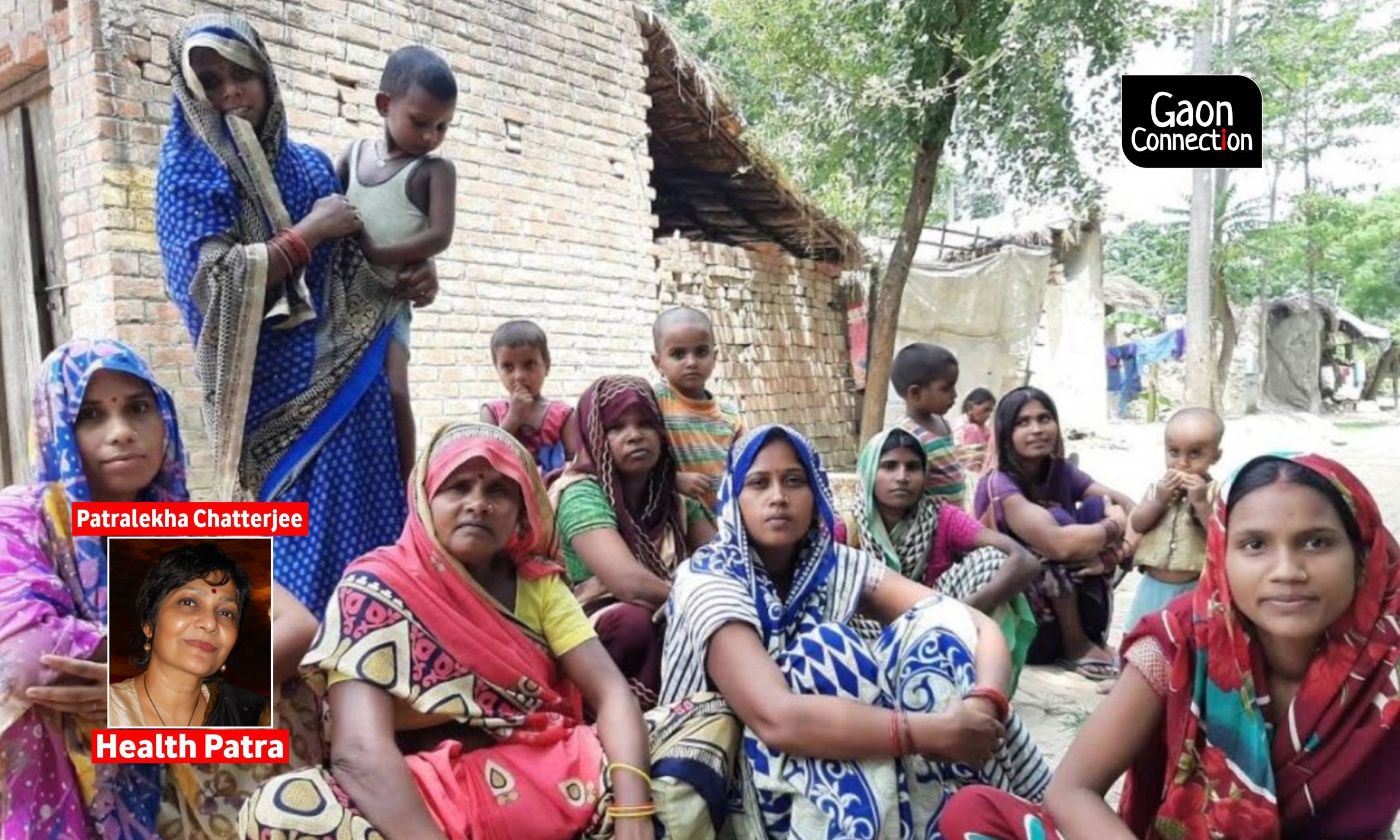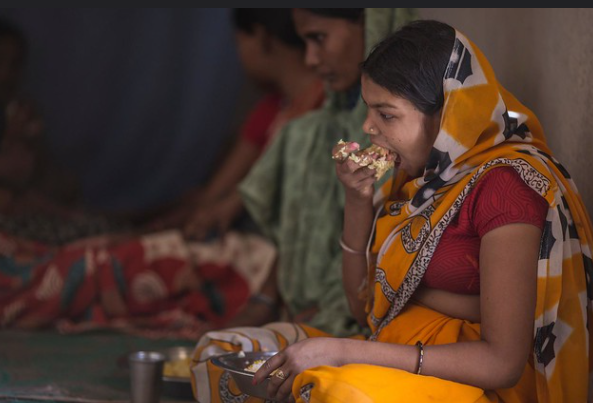Rural India: Rising anaemia points to the wider problem of long-term deterioration of India’s human capital
It is not that the NFHS-5 is all doom and gloom. But the nutrition and anaemia indicators are a wake-up call. Anaemia has worsened in several states since 2015-2016. Worryingly, this slide-back happened before the onset of the pandemic, which suggests the current situation is probably worse.


India has kicked off the world’s largest COVID-19 vaccination drive. That is the big story. But away from the headlines, there is the other big story in the masses of data put out by the latest National Family Health Survey that can only be described as a typically Indian paradox — fewer children are dying in the country, but for millions of those who survive, it is a grim tale of anaemia and malnutrition.
Data from the NFHS-5, which covered 17 states and five union territories in the first phase, tells us that the under-5 and infant mortality rate has plummeted in 18 states and union territories. The good news, however, needs to be seen alongside a situation where many states have shown a sharp surge in anaemia among children and adults and worsening of malnutrition.
India’s anaemia crisis is an old problem. But because it is a slow disaster, rather than a dramatic one, it does not often make headlines. That is the danger. According to NFHS 5 (2019-2020), anaemia has worsened in several states since 2015-2016, captured in NFHS-4. Worryingly, this slide-back happened before the onset of the pandemic, which suggests that the current situation is probably worse.
Why does this matter?
The short answer: Because rising levels of anaemia point to the wider problem of long-term deterioration of India’s human capital. Anaemia casts a long shadow in the countryside where the vast majority of Indians live.

Anaemia is a condition in which the number of red blood cells or the haemoglobin concentration within them is lower than normal. Its symptoms include fatigue, weakness, dizziness and shortness of breath, among others. “The most common causes of anaemia include nutritional deficiencies, particularly iron deficiency, though deficiencies in folate, vitamins B12 and A are also important causes,” says the World Health Organization.
A large number of anaemic women often signifies high levels of malnutrition in the population with all its attendant consequences. Anaemia among women of child-bearing age heightens the risk of low-birth-weight infants and infant anaemia. This inter-generational anaemia that affects the mind and the body means huge numbers of people will simply not be able to live life most productively. We also know that access to, and consumption of nutritious food, is linked to a variety of socio-economic and cultural factors.
In an article titled ‘Are Women in Rural India Really Consuming a Less Diverse Diet?’ in Food and Nutrition Bulletin, August 2020, scholars Soumya Gupta, Naveen Sunder, and Prabhu L Pingali talk about their research which tried to empirically establish that women have less diverse diets than other household members. They used primary data collected from 3600 households across three states in India — Bihar, Uttar Pradesh and Odisha. Their research led them to conclude that there was strong evidence that women consume less diverse diets than their households, and that these findings are consistent across different study sites and definitions of diet diversity. They also found that women’s diets are particularly lacking in non-staple food groups such as Vitamin A-rich fruits and vegetables, dairy and eggs.

The NFHS 5 data makes us realise that we must also look at other factors, besides just the socio-cultural ones, to understand the alarming slide back in nutrition gains in some states.
Here are some numbers.
In Assam, 36.5 per cent of rural children between six-59 months were found to be anaemic, at the time of NFHS-4 (2015-2016). That has climbed up to 68.6 per cent by the time of NFHS-5.
The situation was improving on some key indicators between 2005-2006 and 2015-2016. For example, 45.7 per cent of pregnant women of the sampled population between 15 and 49 years in rural Assam were diagnosed anaemic, according to NFHS-4. This was a huge improvement from 72.7 per cent in NFHS-3 (2005-2006).
Disturbingly, NFHS-5 shows that some of these gains have been reversed. According to the latest NFHS, 55.9 per cent of pregnant women between 15 and 49 years in rural Assam are anaemic.
What leaps out is the worsening anaemia and malnutrition even in states that are considered among the better performers in human development. Like Kerala.
In rural Kerala, newborn and infant mortality rates have come down; more children below five are surviving. But there has been a slide back on nutrition between NFHS 4 and NFHS 5.

In Kerala, 35.9 per cent of rural children between six and 59 months were found to be anaemic in 2015-2016 (NFHS-4). The corresponding figure for rural Kerala is 39.8 per cent, according to NFHS-5. It gets more stark when it comes to pregnant women between 15 and 49 years who are anaemic, It was 22.5 per cent for rural Kerala in 2015-2016. That has now shot up to 27.1 per cent in NFHS 5.
Take affluent Gujarat. At the time of NFHS-4, 64.6 per cent of rural children between six and 59 months were found to be anaemic. That has jumped to 81.2 per cent, according to NFHS-5. Another telling marker — 54.2 per cent of pregnant women between 15 and 49 years in rural Gujarat were found to be anaemic at the time of NFHS 4; that has gone up to 66.4 per cent , according to NFHS-5.
Look at Maharashtra. According to NFHS 4, 54 per cent of rural children aged between six and 59 months in the state were anaemic. In NFHS-5, the corresponding figure for rural Maharashtra is a staggering 70.7 per cent. The situation for pregnant women between 15 and 49 years, however, has improved a bit. From 49.9 per cent in NFHS 4, it has come down to 46.5 per cent in rural Maharashtra. But for non-pregnant women between 15 and 49 years who are anaemic, the figure has gone up from 47.7 per cent in 2015-2016 to 56.4 per cent for rural Maharashtra.
So, what changed? The short answer — we don’t fully know.
Experts say we would have greater clarity about the reasons why things have worsened in so many indicators such as anaemia while other health indicators have shown an improvement once we have more granular individual and household data and once the data for the remaining states come in.
But even with the existing data, one thing is clear. Though anaemia and malnutrition are longstanding problems, they are not insurmountable. The situation had improved between 2005-2006 and 2015-2016 in many states. It is also important to recognise that state-wise statistics tell only part of the story. There are sharp variations between districts in the same state and the problem and the solution have to take into account the local context. It is equally important to look at pockets of deprivation even in the better-performing states.
Kerala is held up as a model for human development. The state definitely has much to be proud of. But, there remain pockets that seem to be left behind by the overall model of development, points out Dr Rakhal Gaitonde, professor, Sree Chitra Tirunal Institute for Medical Sciences and Technology, Thiruvananthapuram. Gaitonde points out the examples of the adivasis of Kerala in places such as Wayanad, Palakkad and Idukki, and the fishing communities that are historically marginalised. “These communities present a stark contrast to the general picture about Kerala. As far as NFHS 5 is concerned, we have to check the raw data to what extent the figures for these communities impact the state-level data on child nutrition, anaemia and so on, or the reversal of nutrition indices are part of a more general trend,” he says.
One also needs to remember that in the period between 2015-2016 and 2019-2020, India experienced major macro-economic changes, including Demonetisation (2016), the shock move that triggered a sharp slowdown in the economy and affected millions of people. This is also the period when rural distress was acute. We have also seen cultural battles over serving of eggs to poor children. These factors come on top of legacy issues like lack of dietary diversity.
Reetika Khera, an associate professor (economics) at IIT Delhi, who has written extensively on health and nutrition, has publicly pointed out that two important schemes for women and children — the Integrated Child Development Services (ICDS) Scheme and the Pradhan Mantri Matru Vandana Yojana (PMMVY), part of the National Food Security Act 2013, have suffered from neglect in different ways in the past six years.
Take the Integrated Child Development Services (ICDS), the Government of India’s (GoI) flagship programme aimed at providing basic education, health and nutrition services for early childhood development. According to Accountability India, an initiative of the leading think tank Centre for Policy Research, expenditure on the Supplementary Nutrition Programme (SNP) that comes under ICDS has been decreasing. Between 2015-16 and 2016-17, expenditure on SNP decreased by six per cent from Rs 14,403 crore in 2015-16 to Rs 13,514 crore in 2016-17.
It is not that the NFHS-5 is all doom and gloom. The proportion of institutional births out of total births, for example, has improved across all 17 states, barring Sikkim and Kerala, where it remained at 94.7 per cent and 99.8 per cent respectively, the same levels in 2015, as Oommen C Kurian points out in this commentary for The Observer Research Foundation (ORF)
But the nutrition and anaemia indicators are a wake-up call.
The Government of India’s answer to India’s malnutrition problem is the ambitious Poshan Abhiyan or the National Nutrition Mission. Anaemia-Mukt Bharat is part of this. Its goals are laudable and under its aegis, many activities have happened. But it is time to get more granular data on what works on the ground and what does not.
Patralekha Chatterjee is an award-winning journalist/columnist, and photographer focussing on development issues. Currently, her writing focusses on the intersection of politics and public policy on a range of inter-linked development issues for Indian and international media.
(Views are personal)

